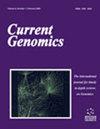Oxford Nanopore Technology and its Application in Liquid Biopsies
IF 1.4
4区 生物学
Q4 BIOCHEMISTRY & MOLECULAR BIOLOGY
引用次数: 0
Abstract
: Advanced medical technologies are transforming the future of healthcare, in particular, the screening and detection of molecular-genetic changes in patients suspected of having a neoplasm. They are based on the assumption that neoplasms release small amounts of various neoplasm- specific molecules, such as tumor DNA, called circulating DNA (cirDNA), into the extracellular space and subsequently into the blood. The detection of tumor-specific molecules and specific molecular changes in body fluids in a noninvasive or minimally invasive approach is known as “liquid biopsy.” The aim of this review is to summarize the current knowledge of the application of ONT for analyzing circulating DNA in the field of liquid biopsies among cancer patients. Databases were searched using the keywords “nanopore” and “liquid biopsy” and by applying strict inclusion criteria. This technique can be used for the detection of neoplastic disease, including metastases, guiding precision therapy, and monitoring its effects. There are many challenges, however, for the successful implementation of this technology into the clinical practice. The first one is the low amount of tumor-specific molecules in the body fluids. Secondly, a tumor molecular signature should be discriminated from benign conditions like clonal hematopoiesis of unknown significance. Oxford Nanopore Technology (ONT) is a third-generation sequencing technology that seems particularly promising to complete these tasks. It offers rapid sequencing thanks to its ability to detect changes in the density of the electric current passing through nanopores. Even though ONT still needs validation technology, it is a promising approach for early diagnosis, therapy guidance, and monitoring of different neoplasms based on analyzing the cirDNA.牛津纳米孔技术及其在液体活检中的应用
先进的医疗技术正在改变医疗保健的未来,特别是在怀疑患有肿瘤的患者的分子遗传变化的筛选和检测方面。它们是基于肿瘤释放少量各种肿瘤特异性分子的假设,如肿瘤DNA,称为循环DNA (cirDNA),进入细胞外空间并随后进入血液。在无创或微创方法中检测体液中肿瘤特异性分子和特异性分子变化被称为“液体活检”。本文综述了ONT在癌症患者液体活检中循环DNA分析应用的最新进展。使用关键词“纳米孔”和“液体活检”检索数据库,并采用严格的纳入标准。该技术可用于肿瘤疾病的检测,包括转移,指导精确治疗,并监测其效果。然而,要将这项技术成功地应用到临床实践中,还有许多挑战。第一个是体液中肿瘤特异性分子的含量很低。其次,肿瘤的分子特征应与良性疾病如克隆造血等意义不明的良性疾病区分开来。牛津纳米孔技术(ONT)是第三代测序技术,似乎特别有希望完成这些任务。由于能够检测通过纳米孔的电流密度的变化,它提供了快速测序。尽管ONT仍需要验证技术,但它是一种基于cirDNA分析的早期诊断、治疗指导和不同肿瘤监测的有前景的方法。
本文章由计算机程序翻译,如有差异,请以英文原文为准。
求助全文
约1分钟内获得全文
求助全文
来源期刊

Current Genomics
生物-生化与分子生物学
CiteScore
5.20
自引率
0.00%
发文量
29
审稿时长
>0 weeks
期刊介绍:
Current Genomics is a peer-reviewed journal that provides essential reading about the latest and most important developments in genome science and related fields of research. Systems biology, systems modeling, machine learning, network inference, bioinformatics, computational biology, epigenetics, single cell genomics, extracellular vesicles, quantitative biology, and synthetic biology for the study of evolution, development, maintenance, aging and that of human health, human diseases, clinical genomics and precision medicine are topics of particular interest. The journal covers plant genomics. The journal will not consider articles dealing with breeding and livestock.
Current Genomics publishes three types of articles including:
i) Research papers from internationally-recognized experts reporting on new and original data generated at the genome scale level. Position papers dealing with new or challenging methodological approaches, whether experimental or mathematical, are greatly welcome in this section.
ii) Authoritative and comprehensive full-length or mini reviews from widely recognized experts, covering the latest developments in genome science and related fields of research such as systems biology, statistics and machine learning, quantitative biology, and precision medicine. Proposals for mini-hot topics (2-3 review papers) and full hot topics (6-8 review papers) guest edited by internationally-recognized experts are welcome in this section. Hot topic proposals should not contain original data and they should contain articles originating from at least 2 different countries.
iii) Opinion papers from internationally recognized experts addressing contemporary questions and issues in the field of genome science and systems biology and basic and clinical research practices.
 求助内容:
求助内容: 应助结果提醒方式:
应助结果提醒方式:


